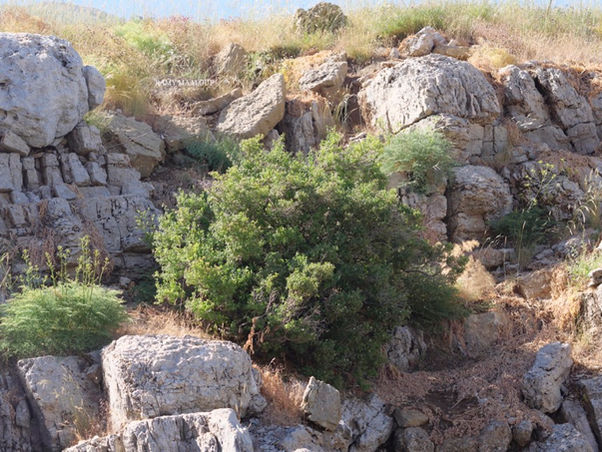Family |
Caprifoliaceae
Lonicera nummulariifolia
Jaub. & Spach

Lonicera nummulariifolia Jaub. & Spach
(Ill. Pl. Orient. 1: 133; 1843 – Nouvelle Flore du Liban et de la Syrie, vol. 2, Pl. CLXVI nº 3; 1969)
• Life-form & habit: Deciduous or semi-evergreen shrub, 0.5–2 m tall, often forming compact hemispherical bushes. Branches slender, opposite, rigid, intricately interlaced; young twigs densely pubescent, later glabrescent and grey-brown.
• Leaves: Opposite, small, orbicular to broadly ovate, 5–15 × 5–12 mm, entire, coriaceous, dull green above, paler beneath, sparsely pubescent on both surfaces; apex obtuse or rounded; petiole short, 1–2 mm.
• Inflorescence & flowers: Flowers paired at the nodes, sessile or shortly pedunculate. Corolla tubular-campanulate, 6–10 mm long, yellowish-white to pale cream, becoming orange with age; bilabiate, upper lip 4-lobed, lower lip entire. Calyx small, 5-toothed, pubescent. Stamens 5, exserted; style filiform with a small stigma.
• Fruit: Berry globose, 5–6 mm in diameter, bright red or orange-red when ripe, containing 2–3 seeds.
• Phenology: Flowers from April to June; fruits mature in summer (June–August).
• Habitat & elevation: Dry rocky slopes, limestone cliffs, and montane shrublands, 1 000–2 500 m. Prefers sunny exposures and shallow, well-drained calcareous soils; often part of open juniper or oak woodland.
• Lebanese distribution: Frequent in the Mount Lebanon range — especially Barouk, Ehden, Bcharreh, Dahr el-Baïdar, and Jabal Sannine; also recorded in the Anti-Lebanon near Rashaya. Common in open, rocky montane scrub and subalpine slopes.
• Native to: Afghanistan, Greece, Iran, Iraq, Kazakhstan, Kirgizstan, Kriti, Lebanon-Syria, Libya, Tadzhikistan, Turkmenistan, Türkiye, Uzbekistan (POWO).
• ⚠️ Taxonomic note: Lonicera nummulariifolia is a widespread Irano–Anatolian montane honeysuckle, readily identified by its small, rounded leaves, paired tubular yellowish flowers, and red berries. Mouterde (1969) described it as a characteristic shrub of high limestone slopes and subalpine scrub in Lebanon, often accompanying Cotoneaster nummularius and Berberis libanotica.












